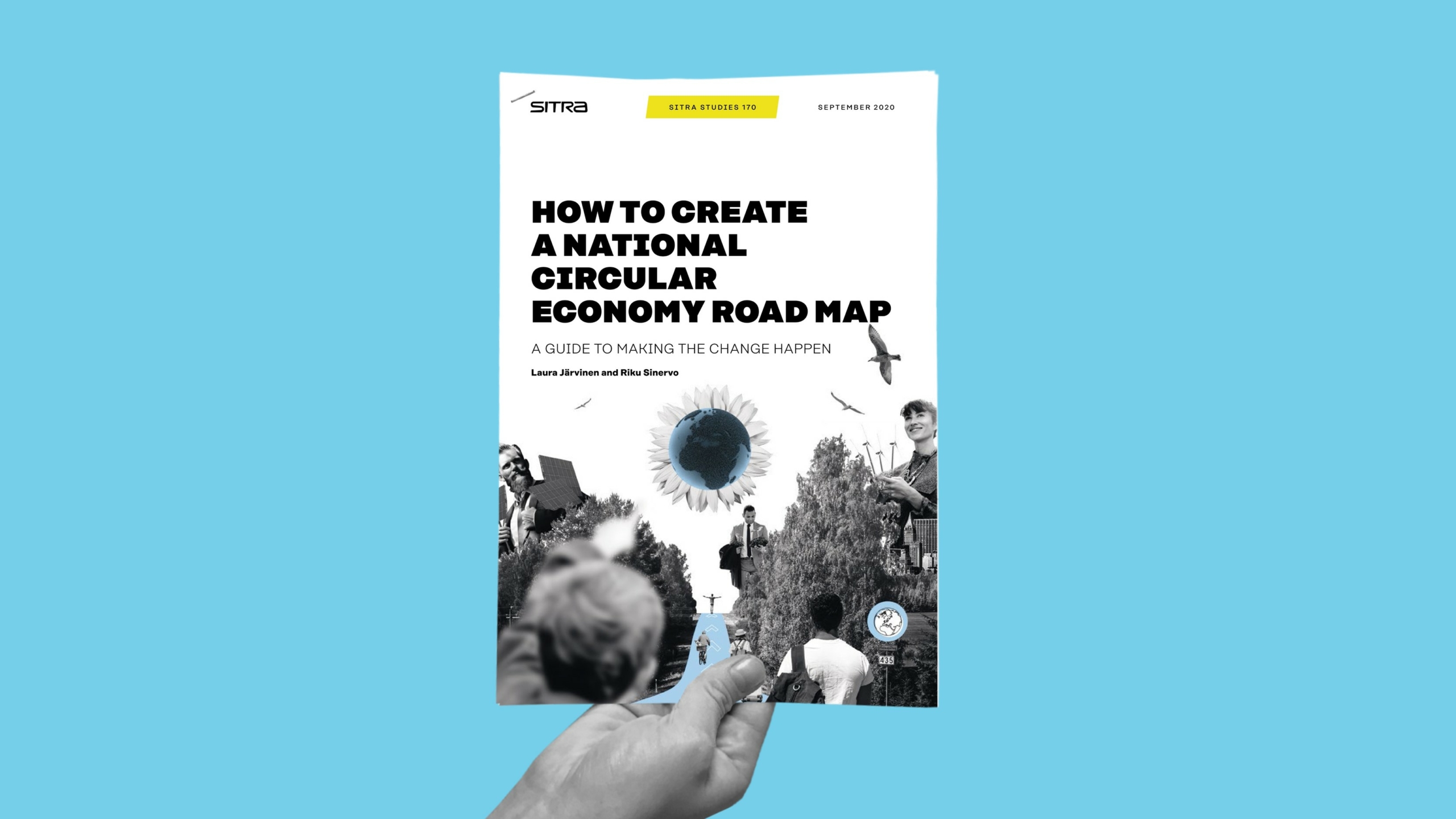WHY?
The change towards a circular economy is not only a wise move for well-being and competitiveness, but also essential for a sustainable future. The circular economy provides solutions to the biggest challenges we are facing – overconsumption of natural resources, climate change and biodiversity loss.
HOW?
Finland was the first country in the world to prepare a national road map to a circular economy in 2016, under the leadership of the Finnish Innovation Fund Sitra. Finland’s circular economy road map, which was subsequently updated in 2019, outlines the circular economy measures to which Finnish state administration, municipalities and businesses have already committed themselves. At the same time the road map presents required measures that do not yet fall under the responsibility of any particular organisation.
A circular economy road map is a tool for change: it helps define the required steps and compiles key stakeholders’ views on the essential changes and actions required for the circular transformation. It is a document that includes a vision as well as goals and tangible actions that will accelerate a country’s transition towards a circular economy.
WHAT?
Finnish Innovation Fund Sitra has compiled a guide based on what has been learned from Finland’s circular economy road map process. The guide features tools, guidelines and inspiration for countries that want to move towards or are already taking their first steps towards a circular economy.
The guide can be used as both an inspiration and a guide that walks the reader through each phase of the road map process. It provides detailed information about the different phases of building a road map and specific examples of how it was done in Finland. With the advice and encouragement provided you do not need to start from the scratch.
WHO?
The guide was created for those who are planning and executing a circular economy road map process – governments, ministries, think tanks, NGOs or independent experts. It is especially useful in a phase where a decision to create a national circular economy has been made but the process is yet to start. However, it can also be used to support an intention to start a circular economy road map process or when updating or revising a circular economy road map.
The circular economy road map process in a nutshell
1. Groundwork and preconditions
Define the preconditions, create a project plan for the process, define team roles and make sure there are sufficient resources available.
2. Stakeholders and participation
Identify key stakeholders and make sure they are committed to the process. Form a steering group and identify needs for other working groups.
3. The situational picture
Deepen the understanding about the current state of the circular economy in the country. The situational picture will serve as a solid basis for the next steps.
4. Vision and goals
Create an inspiring vision for the road map as well as set specific and measurable goals.
5. Focus areas
Define the focus areas based on the vision and strategic goals. Define the indicators that help measure the transition to a circular economy.
6. Planning the actions
Plan the actions that lead to the road map goals. At best, the circular economy road map is a combination of strategy and tangible action plan.
7. Compile and publish
Start compiling the road map. Ask for stakeholder comments. Communicate to inspire others to start their own actions to promote the circular economy.
8. Execution and implementation
Define the management model of the road map and ensure stakeholder commitment to guarantee strong implementation. Remember to communicate.
9. Evaluation and revision
Evaluate ongoing projects, explore supplementary actions and decide on updates. Not to forget securing the maximum impact.
Benefits of a circular economy road map
- Creates a shared mindset about a path towards a sustainable future
- Offers a way to engage key stakeholders
- Builds a path from plans to action, with clear ownership
- Paves the way for resilience and a more sustainable economy
- Helps achieve the United Nations’ Sustainable Development Goals
- Provides a tool for achieving climate targets
- Inspires others to become involved in the transition
Seven key lessons from creating a circular economy road map
- Create the road map from your country’s perspective
- Co-operation is the starting point and a requirement for progress
- Make sure the road map balances action with flexibility
- Form a situational picture
- The road map must be agile to stay relevant
- Measure success, monitor development and set stages for the journey
- Invest in the execution

















Recommended
Have some more.